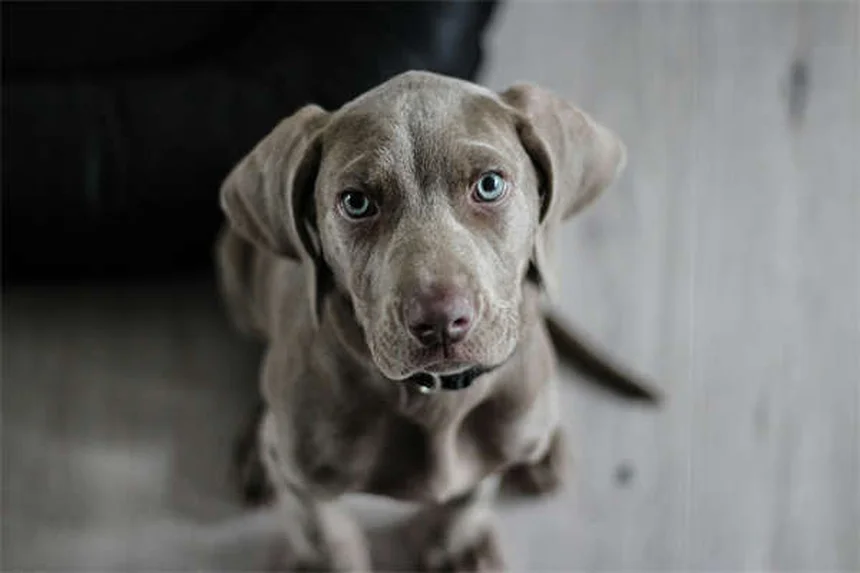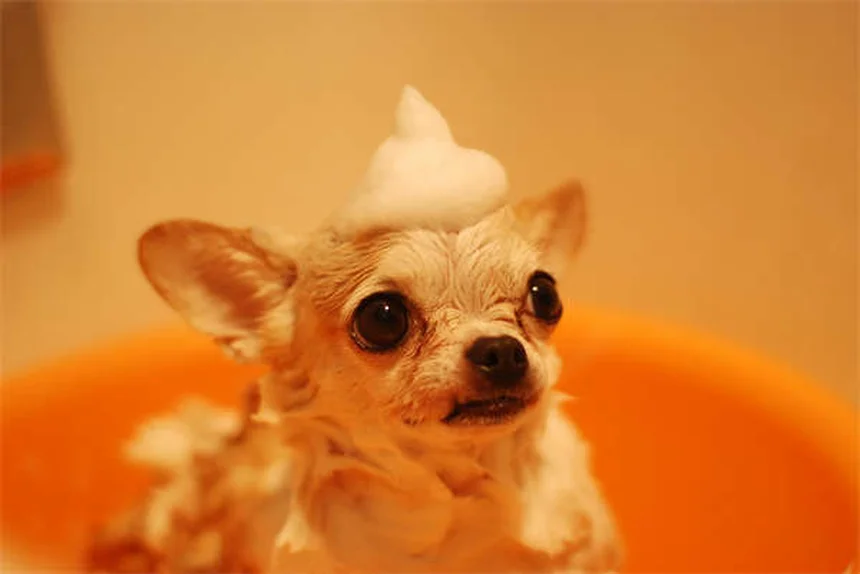Q: Why is my ferret having green diarrhea? A: That slimy green poop is classic ECE (Epizootic Catarrhal Enteritis) - a nasty viral infection attacking your ferret's intestines. Here's the deal: when those tiny hair-like villi in their gut get damaged, digestion goes haywire. We're talking appetite loss, weight crash, and yes - those alarming green stools. The good news? With quick vet care including antibiotics, antivirals, and gut protectants, most ferrets bounce back in 3-5 days. But wait - there's crucial prevention tips every ferret owner needs to know...
E.g. :Dog Vomiting Blood? 5 Emergency Steps Every Owner Must Know
- 1、Understanding ECE in Ferrets
- 2、How Do Ferrets Catch This Bug?
- 3、Getting the Right Diagnosis
- 4、Fighting Back Against ECE
- 5、Keeping ECE Out of Your Home
- 6、Living With an ECE Survivor
- 7、When to Sound the Alarm
- 8、Beyond the Basics: Digging Deeper into ECE
- 9、The Human Factor in ECE Transmission
- 10、Nutrition During Recovery
- 11、The Emotional Toll of ECE
- 12、Prevention Beyond Quarantine
- 13、The Bigger Picture
- 14、FAQs
Understanding ECE in Ferrets
What Exactly is ECE?
Epizootic Catarrhal Enteritis (ECE) is one nasty virus that attacks our ferret friends' intestines. Imagine tiny hair-like projections (villi) in their gut getting damaged - that's exactly what happens. When those villi get wrecked, your fuzzy buddy can't properly digest food or absorb nutrients. Not cool, right?
Here's something wild - symptoms can pop up anywhere from 2 to 14 days after infection. That's like playing Russian roulette with your ferret's health! The most common signs include:
- Turning up their nose at food (even their favorite treats!)
- Greenish, watery diarrhea (we call it "green slime disease" in the biz)
- Bloody black stools (scary stuff)
- Looking like they partied too hard (lethargy)
- Dropping weight faster than my New Year's resolutions
How Bad Can It Get?
Let me put it this way - untreated ECE can turn your playful furball into a weak, dehydrated shadow of themselves. I've seen ferrets lose up to 30% of their body weight in just a few days. The dehydration alone can be life-threatening if we don't catch it early.
How Do Ferrets Catch This Bug?
 Photos provided by pixabay
Photos provided by pixabay
The Usual Suspects
Ferrets are social creatures, but that's exactly how ECE spreads - like gossip in a high school hallway. Direct contact with infected ferrets is the main culprit. But get this - your ferret doesn't even need to meet Patient Zero to get sick!
Contaminated objects are sneaky carriers too:
| Common Contaminants | How Long Virus Survives |
|---|---|
| Food bowls | Up to 48 hours |
| Bedding | Up to 72 hours |
| Your clothes | Up to 24 hours |
Ever Heard of "Fomites"?
That's just a fancy word for objects that carry infection. Think about it - you pet an infected ferret at a friend's house, then cuddle your own. Boom - you just became an ECE Uber driver! That's why quarantine and hygiene are so crucial.
Getting the Right Diagnosis
Why Biopsies Matter
Here's a question you might be wondering: "Can't vets just do a poop test?" Great question! While stool samples can hint at ECE, they're not definitive. The gold standard is actually an intestinal biopsy. It sounds scarier than it is - vets use a tiny camera to peek inside and take a small tissue sample.
The biopsy shows the characteristic damage to those villi we talked about earlier. Without this, we might mistake ECE for other gut issues like parasites or food intolerance.
 Photos provided by pixabay
Photos provided by pixabay
The Usual Suspects
While waiting for biopsy results (which can take a few days), your vet will likely:
- Check for dehydration (skin tent test)
- Run blood work to rule out other conditions
- Monitor weight loss progression
Fighting Back Against ECE
The Treatment Toolkit
When ECE strikes, we pull out all the stops. Your vet will probably prescribe:
- Antibiotics (to prevent secondary infections)
- Antivirals (to tackle the virus itself)
- Gut protectants (like pepto for ferrets)
- Fluid therapy (IV or subcutaneous)
But here's the kicker - meds alone aren't enough. Nutrition is half the battle! We're talking about:
- Easy-to-digest foods (think ferret baby food)
- Frequent small meals (8-10 times daily)
- Probiotics to rebuild gut health
The Recovery Timeline
Ever wonder "How long until my ferret bounces back?" Most start improving within 3-5 days of treatment, but full recovery can take weeks. The gut needs time to heal those damaged villi. During this period, expect:
- Gradual return of appetite
- Less frequent (and less gross) poops
- More energy and playfulness
Keeping ECE Out of Your Home
 Photos provided by pixabay
Photos provided by pixabay
The Usual Suspects
New ferret? Hit pause on introductions! A 30-day quarantine isn't being paranoid - it's being smart. Here's how we do it:
- Separate room (no shared air space)
- Dedicated supplies (food bowls, litter pans)
- Wash hands between handling
- Change clothes after contact
Disinfection Done Right
Not all cleaners work against ECE. You'll want:
- Bleach solutions (1:32 dilution)
- Accelerated hydrogen peroxide cleaners
- Steam cleaning for fabrics
Pro tip: Rotate disinfectants monthly - viruses can develop resistance too!
Living With an ECE Survivor
The Long-Term Outlook
Good news - most ferrets fully recover! But some become chronic shedders, meaning they can infect others even when healthy-looking. If this happens:
- Maintain separate living areas
- Always handle the shedder last
- Consider them "grounded" from playdates
Building Gut Health Back Up
Post-ECE, your ferret's digestive system needs TLC. I recommend:
- Probiotic supplements for 3+ months
- Digestive enzymes with meals
- High-quality, easily digestible protein
Remember - patience is key. Their tummy has been through a war!
When to Sound the Alarm
Red Flags You Can't Ignore
While most cases are manageable at home, rush to the vet if you see:
- No improvement after 48 hours of treatment
- Severe lethargy (can't stay awake)
- Blood in vomit or stool
- Temperature below 100°F or above 104°F
The Silver Lining
Here's some hope - ferrets who beat ECE often develop immunity. It's like their gut graduates from boot camp! With proper care, your fuzzy friend can return to their mischievous, sock-stealing selves.
Featured Image: iStockphoto.com/Irina Vasilevskaia
Beyond the Basics: Digging Deeper into ECE
The Science Behind the Green Slime
Ever wonder why ECE causes that distinctive green diarrhea? It's actually bile that hasn't been properly absorbed! When those intestinal villi get damaged, they can't do their job of absorbing digestive fluids. The result? That lovely green slime we all love to hate.
Here's something fascinating - the color can actually tell us about the infection's progression. Dark green usually means early stage, while yellowish-green suggests the body's starting to recover. It's like nature's own progress bar!
ECE vs. Other Ferret Illnesses
How can you tell ECE apart from other common ferret diseases? Let's compare two big ones:
| Symptom | ECE | Insulinoma | Adrenal Disease |
|---|---|---|---|
| Diarrhea | Severe (green) | Rare | Occasional |
| Appetite | Loss of | Ravenous | Normal or increased |
| Energy Level | Extremely low | Weakness after fasting | Normal or hyperactive |
See how different they are? That's why proper diagnosis is so crucial. You wouldn't want to treat for ECE when it's actually insulinoma!
The Human Factor in ECE Transmission
Can You Get Your Ferret Sick?
Here's a question that might surprise you: "Could I accidentally give my ferret ECE?" Absolutely! Humans can be what we call "mechanical vectors" - meaning we can carry the virus on our hands or clothes without getting sick ourselves.
Think about all the places your hands go in a day - doorknobs, keyboards, your phone. Now imagine petting an infected ferret at the pet store, then coming home to handle your own fuzzy buddy. That's why washing up isn't just good hygiene - it's ferret healthcare!
The Breeder Connection
Many ECE outbreaks trace back to ferret breeders or pet stores. It's not that they're careless - it's just math. More ferrets in one place means more chances for transmission. When you're getting a new ferret, don't be shy about asking:
- Their quarantine procedures
- Recent health issues in their colony
- Cleaning protocols
Remember, a responsible breeder will appreciate these questions!
Nutrition During Recovery
The Magic of Duck Soup
Veterinarians often recommend "duck soup" for recovering ferrets, but what exactly is it? This high-calorie recovery food typically contains:
- High-quality kibble soaked in warm water
- Meat baby food (no onions or garlic!)
- Nutritional supplements
- Sometimes probiotics or digestive enzymes
The name comes from how messy it looks - definitely not something you'd serve at a fancy dinner party! But for a sick ferret, it's like the best comfort food ever.
Hydration Hacks
Dehydration is the silent killer with ECE. Here's a pro tip: try offering unflavored Pedialyte instead of water. The electrolytes help with recovery, and many ferrets actually prefer the slightly sweet taste. You can:
- Offer it in a shallow dish
- Use a syringe if they won't drink
- Mix it into their duck soup
Just make sure it's the unflavored kind - no artificial sweeteners allowed!
The Emotional Toll of ECE
Stress - The Hidden Complication
We often forget how stress affects recovery. A sick ferret who's constantly handled or kept in a noisy environment will heal slower. Create a recovery space with:
- Soft bedding
- Low lighting
- Quiet surroundings
- Familiar smells (like their favorite blanket)
Think of it like creating a ferret spa - minus the cucumber eye treatments!
Bonding Through Care
Here's a silver lining: nursing a ferret through ECE can actually strengthen your bond. The frequent feedings and gentle care help build trust. Many owners report their ferrets become more affectionate after recovery. It's like they remember who helped them through the tough times!
Just don't be surprised if your once-independent ferret suddenly wants to be your shadow. You've basically become their favorite person!
Prevention Beyond Quarantine
The Vaccine Question
You might be wondering: "Why isn't there an ECE vaccine?" Great question! The virus mutates quickly, making vaccine development challenging. Plus, ferrets' immune systems are tricky - what works for dogs or cats often doesn't translate.
Researchers are working on it, but for now, prevention comes down to good old-fashioned hygiene and common sense. Sometimes the simplest solutions are the most effective!
Building a Ferret First Aid Kit
Every ferret owner should have an ECE-preparedness kit. Here's what to include:
- Digital thermometer (rectal, sorry little buddy!)
- Unflavored Pedialyte
- Meat baby food
- Syringes for feeding
- Probiotic supplements
- Your vet's emergency number
Store it somewhere easily accessible - when ECE strikes, you won't want to go hunting for supplies!
The Bigger Picture
How Common is ECE Really?
Studies suggest about 60% of ferrets will encounter ECE at some point. But here's the interesting part - cases spike in spring and fall. Some theories suggest this seasonal pattern relates to:
- Breeding cycles (more kits means more transmission)
- Temperature fluctuations stressing immune systems
- Increased ferret gatherings at shows or meets
Knowing this pattern can help you be extra vigilant during peak seasons!
Global Perspectives on ECE
ECE isn't just an American problem - it's worldwide. But different countries handle it differently. In some European countries, for example, ferret boarding facilities require health certificates specifically checking for ECE. Maybe we should take a page from their book!
The bottom line? Whether you're in New York or Tokyo, ECE is something every ferret owner should understand. Knowledge is power when it comes to keeping our fuzzy friends healthy!
E.g. :Viral Infection (ECE) in Ferrets | PetMD
FAQs
Q: How long does it take for ECE symptoms to show in ferrets?
A: Here's what we've seen in our clinic - ECE symptoms can appear anywhere from 2 to 14 days after exposure. It's like a ticking time bomb! The virus first damages those crucial intestinal villi (the nutrient-absorbing "hairs"), then boom - your ferret stops eating and starts producing that trademark green, slimy diarrhea. We call this the "green slime disease" phase. During this window, quick action is crucial because dehydration and weight loss can become severe within just 48 hours.
Q: Can my other ferrets catch ECE from an infected one?
A: Absolutely, and here's why that keeps us vets up at night - ECE spreads faster than gossip at a ferret convention! The virus travels through direct contact or contaminated objects (we call these "fomites"). That food bowl? Could harbor the virus for 48 hours. That cute little hammock? Up to 72 hours. Even your clothes can transport the virus for 24 hours! That's why we insist on 30-day quarantines for new ferrets and rigorous disinfection protocols with bleach solutions or hydrogen peroxide cleaners.
Q: How do vets test for ECE in ferrets?
A: Great question! While poop tests might hint at ECE, the gold standard is an intestinal biopsy. Here's how it works: we use a tiny camera to examine the gut lining and take a small tissue sample. This shows the characteristic villi damage that confirms ECE. Meanwhile, we'll also check for dehydration (using the skin tent test), run blood work, and monitor weight loss. The biopsy results typically take 2-3 days, but we start treatment immediately because - let's be real - waiting isn't an option when your ferret's dropping weight that fast!
Q: What's the treatment plan for a ferret with ECE?
A: We attack ECE on three fronts - medication, nutrition, and hydration. First, we prescribe antibiotics to prevent secondary infections and antivirals to combat the virus itself. Then we add gut protectants (think Pepto for ferrets). But here's the game-changer: nutritional support. We're talking ferret "baby food" - easy-to-digest meals served 8-10 times daily, often syringe-fed if they won't eat. IV or subcutaneous fluids combat dehydration. The good news? Most ferrets show improvement within 3-5 days, though full recovery takes weeks as those villi regenerate.
Q: Can a ferret get ECE more than once?
A: Here's some silver lining - most ferrets develop some immunity after beating ECE. But (and this is important) some become chronic shedders, meaning they can infect others even when healthy-looking. If this happens, we recommend permanent separation from other ferrets. Post-recovery, we focus on rebuilding gut health with probiotics (for 3+ months), digestive enzymes, and high-quality protein. Remember - their little intestines have been through war, so patience is key! Watch for relapse signs like recurring diarrhea or appetite loss.



Discuss